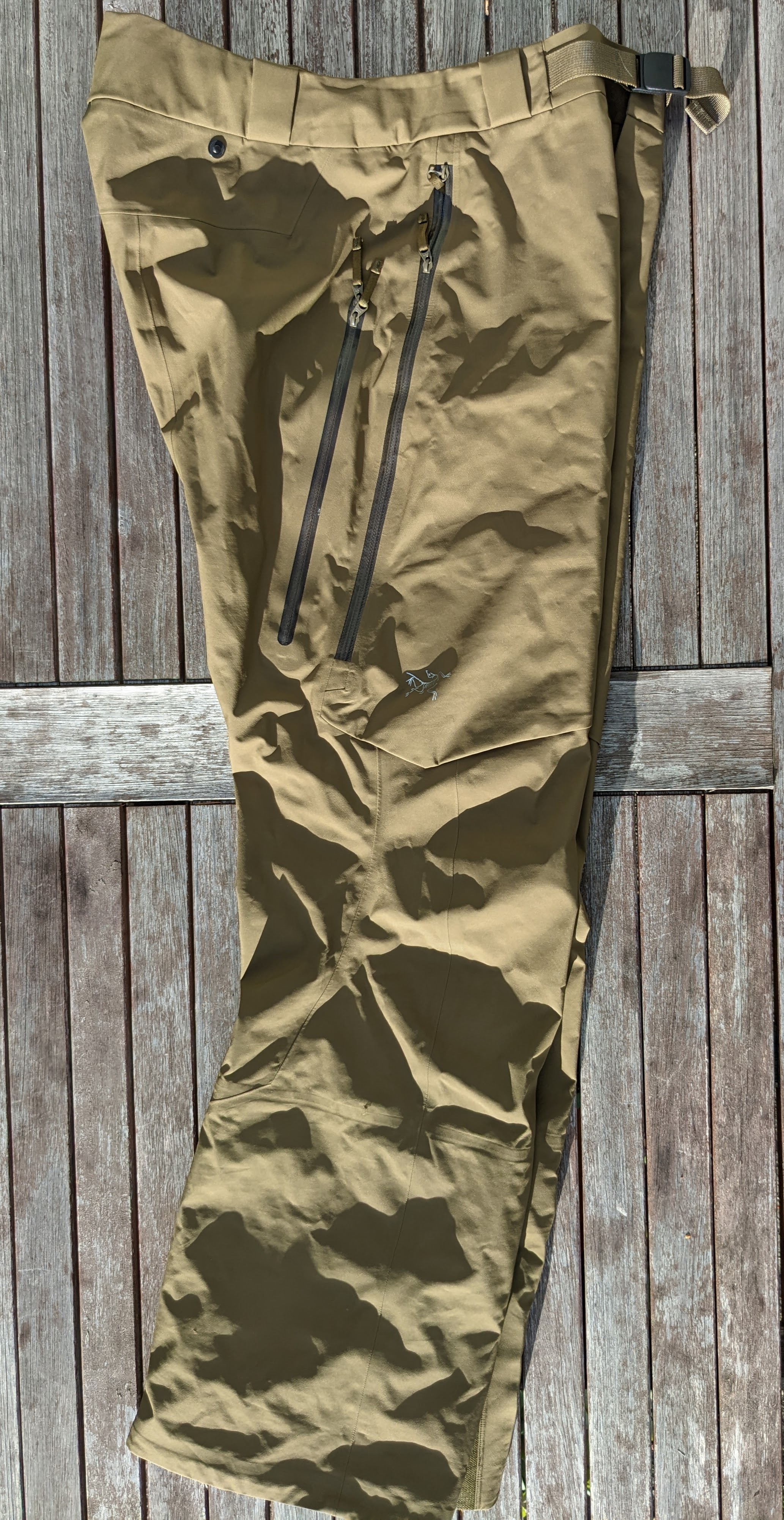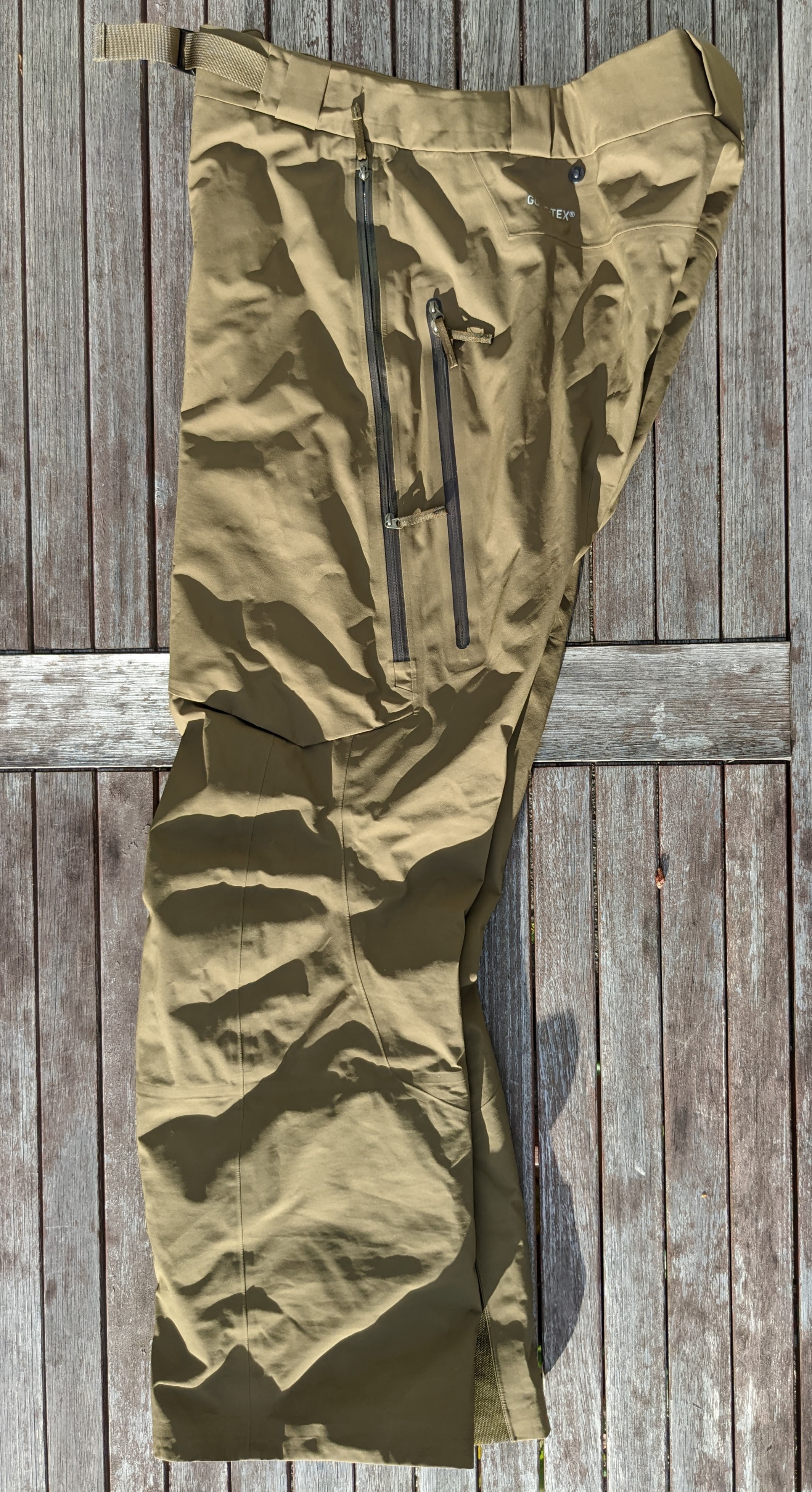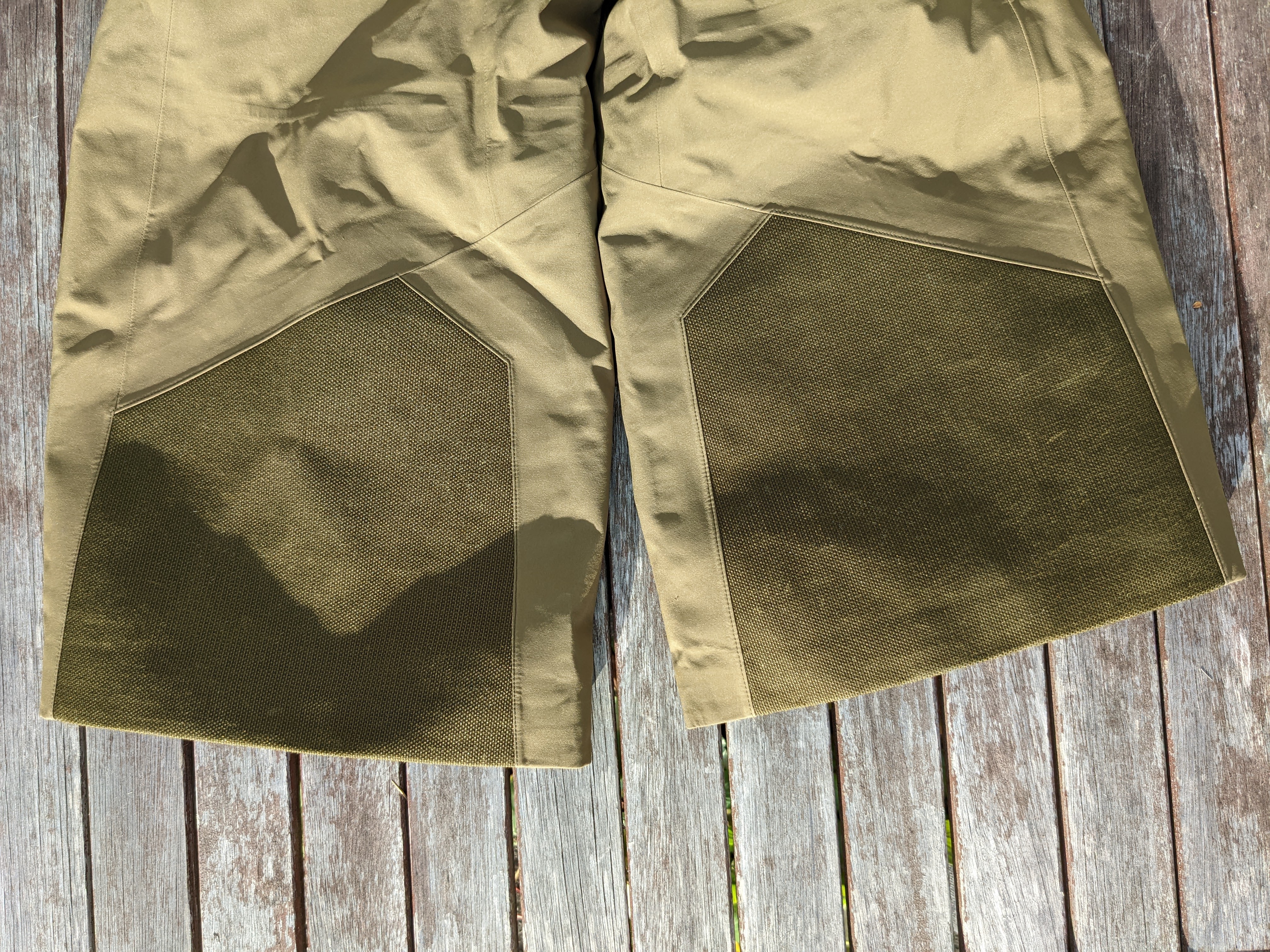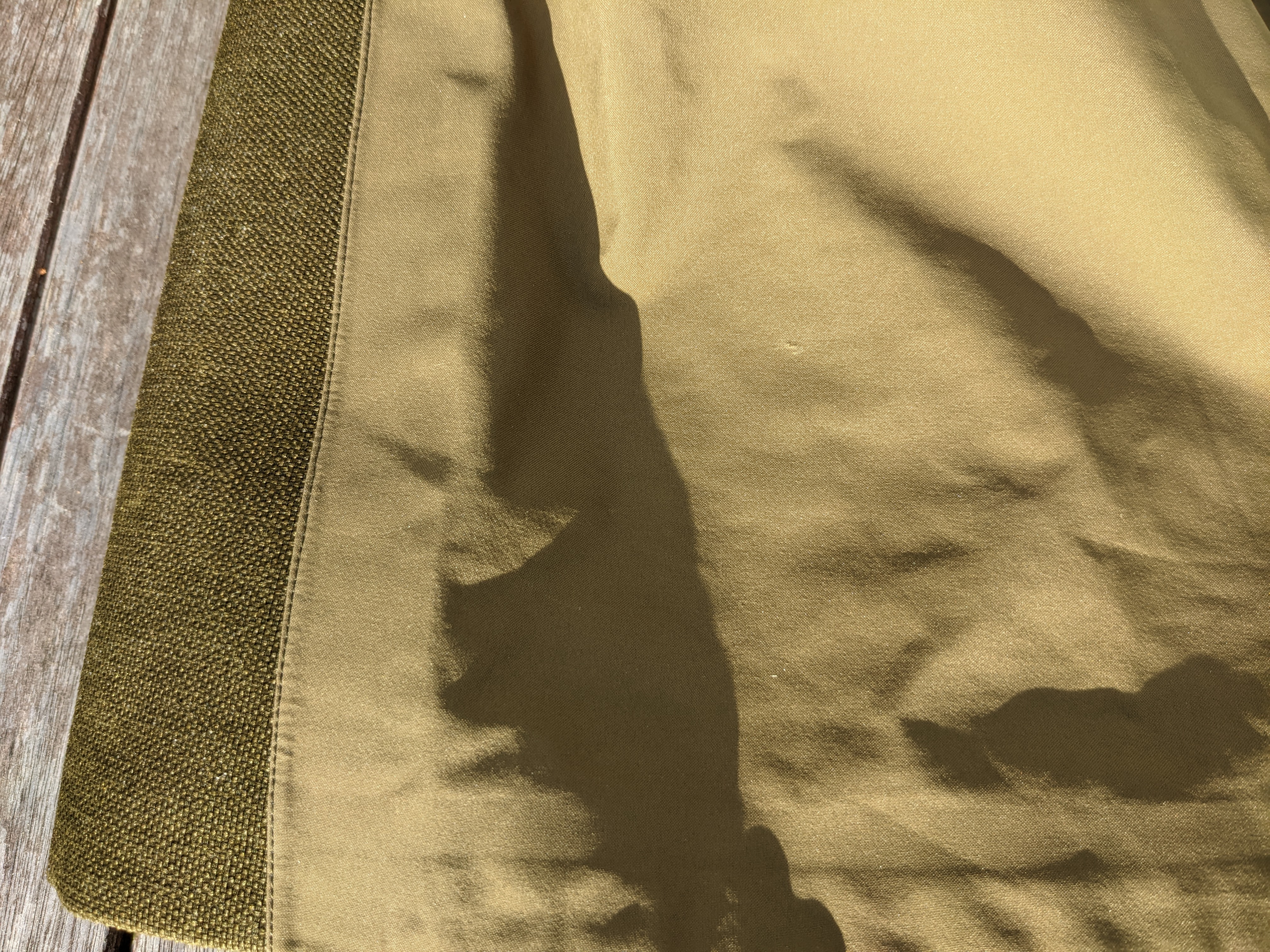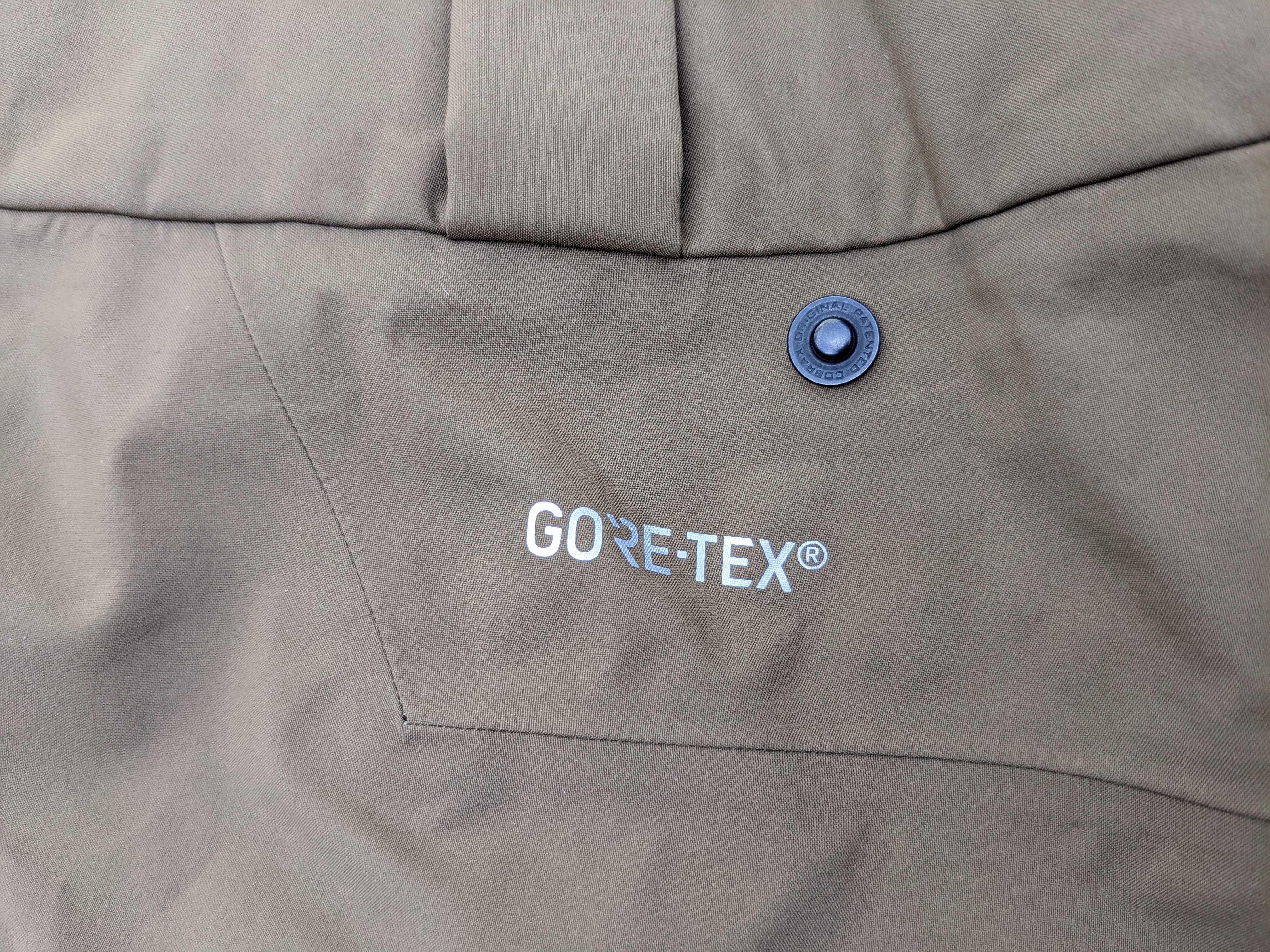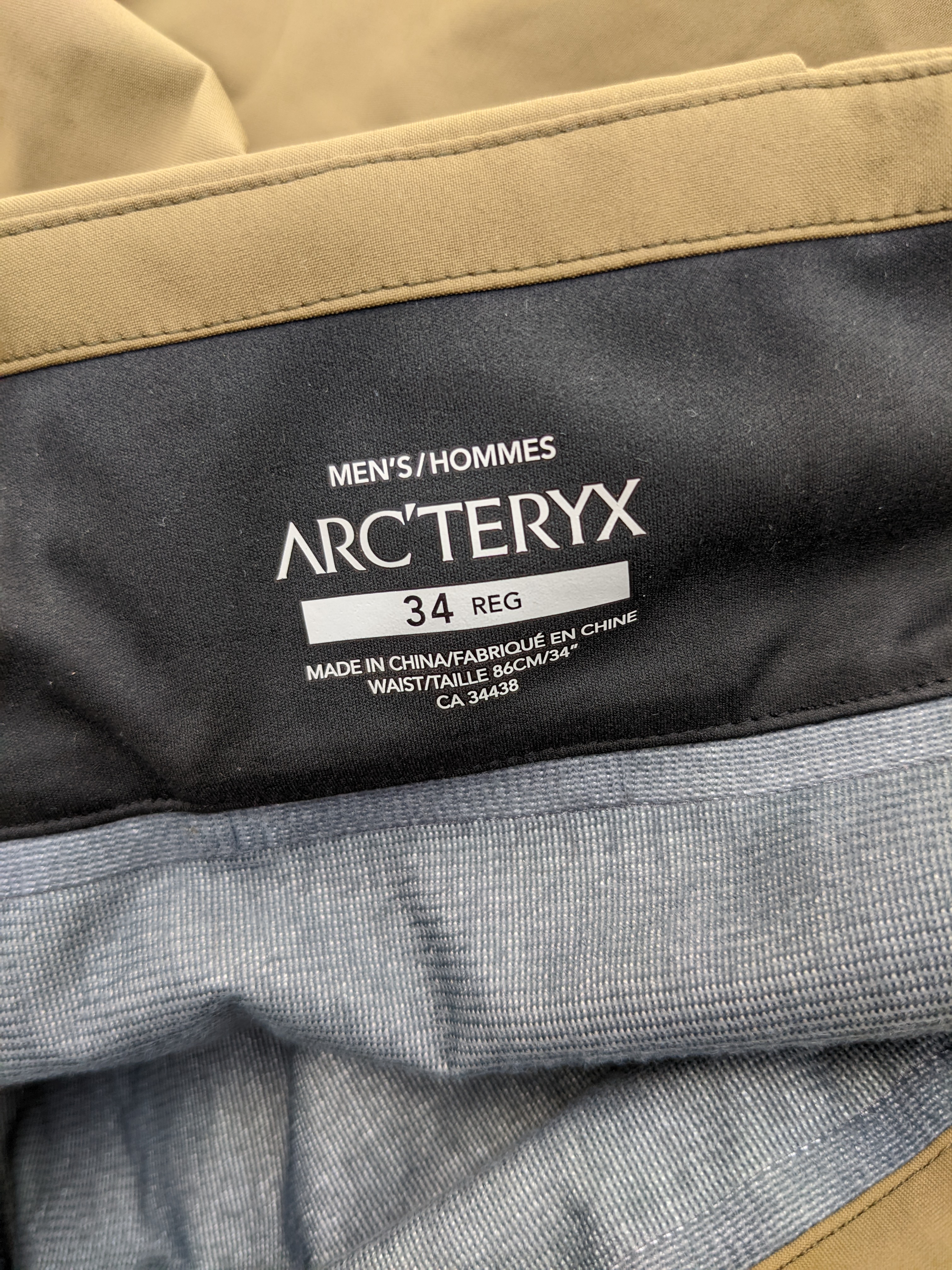-
Posts
158 -
Joined
-
Last visited
Everything posted by Maxtrax
-
Everything is used except the Spantiks (bought them for a Denali trip that never happened... just sat in my garage ever since). Prices for face to face pickup between Northgate and Lynnwood or will ship at actual cost at buyer's expense. For shipped orders I can take Paypal or Venmo, please cover fees if you use PP G&S. Any questions, need added pics, think I'm way out of line on my prices, or whatever, just ask. La Sportiva Spantik size 43 - new/unused - $400 sold Arc'teryx Gamma AR pants size M - minor scuffs on one cuff, two small crampon strikes on other cuff, great condition otherwise - $90 sold Arc'teryx Gamma SK pants size M or 34 Reg - size is worn off, can't recall if these were numeric or letter sizing but they were either M or 34, fair amount of scuffs on scuff guards, one cut outside of them, include suspenders - $90 sold Arc'teryx Epsilon AR jacket size M - end anchor of one side of the hem drawstring tore out but it is still functional - $75 sold Arc'teryx Iser pants 34 Reg - Used once, almost no wear, a couple minor scuffs on the scuff guards and one small (a couple mm) scuff outside of scuff guard, Goretex Softshell material (fully waterproof) essentially the same as a Sabre pant, just with different pockets and not as baggy in the lower leg - $275
-
I need a suggestion for a video that I can access online where they discuss how rapidly the weather changes while you're in the mountains. My science class is combined with our winter program for the next couple of weeks, so we're covering various backcountry safety topics. I want to introduce them to the idea that being prepared for changing conditions is important (and the science bit will be *why* those changing conditions occur). Any help would be greatly appreciated! Thanks!
-
Adding another vote for the Cilogear 30L. I used to use the 45 all the time but managed to stuff a 4 day/3 night Rainier trip into my 30L a few years ago and the 45 hasn't left the gear bin since. For any trip that I can't make the 30L work for I bump up to either my Golite Gust (~68L, 1lb 5oz empty) or Cilo 60L, depending on how heavy the load is.
-
GORE Soft Shell refers to the handling characteristics of the fabric and is completely waterproof. softshell is a category of fabrics/garments that balance wind and water resistance with breathability and comfort in terms of stretch and feel. Some are more water resistant (e.g. Windstopper or Schoeller WB-400) than others (e.g. Polartec Powershield or Tweave Durastretch) but if it is waterproof (e.g. MH Conduit) then it is a hardshell
-
Softshell by definition is not waterproof. Personally I ice climb in a pair of Arc'teryx Gamma LT or Gamma AR pants if the temps are below 28-30 F and have an old pair of full zip Gore XCR pants to throw over them if temps get close to/above freezing. It gives me the best balance of comfort and weather protection. I don't see the need for a waterproof pant when any precip is frozen. That said I wish I had snapped up a pair of the Rab Fusion pants when I had a chance to...my butt and knees are really the only areas that have ever wetted out on my soft shell pants.
-
I have never felt the need for adding an autoblock to a munter, it just seems to add unnecessary friction and complication to the knot. The garda hitch/alpine clutch might be better for your application. If you need to go hands free while belaying with a munter you can quickly tie it off with a mule knot, < 10 seconds with practice.
-

How to simul with 3 climbers: 45 deg+ snow/ ice
Maxtrax replied to Woodcutter's topic in Climber's Board
As mentioned above if there is minimal/no crevasse hazard just solo. Unless there is good rock pro along the sides of a couloir or ice for placing screws I feel much more comfortable soloing rather than having the false security of a rope on marginal pro. This can lead to some sticky situations, e.g. after soloing through an area with no/very little pro if one climber is injured and unable to solo back down through that area self rescue can be made more difficult as your party is forced to rely on janky pro for a belayed downlclimb/lower or fail upwards. -

Trad gear in carry on bags when flying?
Maxtrax replied to Quarryographer's topic in Climber's Board
I've flown across the country with my rack in my carry on 2 or 3 times each on Southwest and Delta, never had any hassle but have always taken my nut tool out. Never tried flying with ice screws in the carry on though... doubt that would be kosher. -
Nice work guys, way to keep at it. Fully agree about the shitiness of the Cascadian. I climbed Stuart in '07 and '08 and the memory of the descent is still obnoxious enough that I'm not read to go back for more, as awesome as the North Ridge is.
-
Sorry you can't buy a copy but I guess they will give you one... Personally, I am stoked to have re-upped this year after a 4 year lapse and I got to renew my Alpinist subscription at a discount at the SBP kickoff event.
-
Check out King of the Ruins at Vantage and any other .12 at World Wall. Bust the Move would probably be the easiest one other than Rainy Day.
-
I am by no means an expert but tricks that have worked well for me are pushing outwards and making small non dynamic movements rather than pulling directly downwards and tunneling/groveling as much as possible to try and find more "solid" rime underneath the ephemeral outer coating.
-
As Dane pointed out your picks are actually .2mm narrower than your friends so theoretically you should actually be displacing less ice and causing less fracturing/dinner plating. So I think this case might just boil down to swing. I have found that Petzl tools force me to execute more of a wrist flick to get good sticks whereas with BD tools I can get good sticks swinging almost entirely from the shoulder and I have to force myself to make more of a wrist flick. Regardless of tool brand or pick model I fracture less ice the less I swing from the shoulder and the more I seat the tool with a quick wrist flick.
-

any opinions about the Mammut Monolith GTX boot?
Maxtrax replied to vsigler's topic in The Gear Critic
Performance is going to be similar to any other hybrid leather/synthetic boot that takes a new-matic style crampon. If you intend to do more steep climbing then you might consider the Mamook instead. Most folks I've talked to who have worn either boot described the fit as typical Raichle and sized them .5 to 1 size above street shoe. -
Why don't you go do so? I know Ian and he is anything but someone who artificially inflates grades. If he says it's a grade IV, I trust him that it's a grade IV.
-
Incorrect, UHMWPE (Dyneema/Spectra are trade names) has significantly higher UV resistance and abrasion/wear resistance than Nylon. Personally I replace my Dyneema slings when they start fuzzing out/fraying (typically every 4-5 years) or if they get a permanent kink in them similar to a coreshot in a rope. Regarding long-term storage with no use, nylon naturally degrades over time, enough that most manufacturers recommend retiring any lead ropes 10 years after date of manufacture or 5 years after purchase, whichever comes first. UHMWPE also degrades over time but I believe at a much slower rate, though I can't find my reference right now without being on a school computer. Edited to clarify/add: The above refers strictly to a direct comparison of the fibers/yarns. Dyneema is often quoted as being 10x as strong as steel but the second half of the statement is ommited. Dyneema has a 10x higher tensile strength than steel when you compare equal masses of the materials - not if you compare a skinny climbing sling to a large girder or I-beam. The same principle applies when comparing climbing slings. Functionally, Dyneema slings may appear to have lower wear resistance than nylon and/or age quicker than nylon slings. This is simply because there is significantly less material in the Dyneema slings than the nylon slings currently on the market. Typically when people compare climbing slings they are looking at 1" (25.4mm) or 11/16" (17.5mm) nylon vs. 8mm or 10mm Dyneema. That is comparing apples to oranges (or at least pears). For a better comparison, one should really consider 1/2" (12.7mm) nylon vs. 8mm Dyneema as both have roughly equivalent masses per length (a shoulder length sling out of either has a mass of 18gm +/- 1gm).
-
Also, for getting your stuff back to the lower 48 you can often get cheap freight with Lynden on their back-carries because they're coming south mostly (or entirely) empty anyways.
-
Ahh, didn't recognize the Aztar with all the grip tape on it. The other one definitely isn't a venom though - the bolt pattern for the pick is wrong and the venom doesn't have a removable hammer.
-
What ice tools are those summitchaser?
-
Regarding the decision to descend a different route- I was up there planning to climb Gib Ledges a week before but we decided that even with an early start conditions were warm enough to increase the objective hazard from rock and icefall well above our comfort level. Even with freezing levels lower on the 2nd than they were on the 26th I still wouldn't want to head back down Gib Ledges after the sun was up and especially after I'd spent additional time searching for the lost climber. Additionally, the ID route is still in good shape and is well wanded which could have been a factor in the decision, especially if one had doubts about finding the top of Gib Chute in whiteout conditions. Granted this is all speculation on my part, but from my armchair I would select the ID as probably the faster and definitely the safer descent route.
-
Cascade designs does not recommend the universal repair kit for the NeoAir pads, the ultralight repair kit is the one you are looking for.
-
Hoh river approach, wear trail runners at least to elk lake. Go really light (don't carry much water, if any at all, you cross streams where you can filter/refill every mile or two until elk lake), hit the summit block before any other parties, be comfortable soloing up and down exposed 4th class. Eat at the Haven or Chestnut Cottage in Port Angeles and stop at Sunny Farms in Sequim for fresh produce on your way home.
-
Aid climb. A lot. Go somewhere like Nevermind at exit 38 or World Wall at exit 32 where you can take some bigger sport falls safely. Climb some nice easy granite trad routes with easy gear - Apron and Smoke Bluffs or L-town come to mind.
-
Josh, from my own experience I favor the Reactor over the Jetboil for almost any trip for three key reasons - faster boil times, way better/more consistent performance in the wind (i.e. brew stops) and a large enough pot to actually be useful for 2 people or melting snow. I rarely take either during the summer, typically opting for cold food or my Brunton Crux which with a lightweight Al pot is a smaller package and is lighter overall for trips up to about 9 or 10 days. Edit to add: One stove I'd still really like to mess around with but never have is the MSR WindPro. I'd be curious to see if combined with a lightweight Al pot and a good titanium windscreen it could give the Reactor a run for its money melting snow by keeping the remote canister warmer and/or inverted to burn off the butane faster as it liquefies in the cold. Another interesting test would be to compare different brands of canister fuels/mixtures of isobutane and propane to see which (if any) performed better in colder weather or as the canister is diminished.


